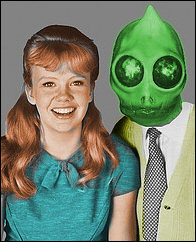 Frank Frollo drew for Funny Picture Stories #11 (Nov 1938) one of the most economical comic book action sequences I've ever read.
Frank Frollo drew for Funny Picture Stories #11 (Nov 1938) one of the most economical comic book action sequences I've ever read.
Probably in the interest of filling space Frollo decompressed the action so far that often a pivotal panel has all the typical excitement one would expect from an Indiana Jones-type adventurer occurring off page and is merely implied. Many of the characters don't react to what should be a frightening or anxious moment and are depicted either staring at objects, gesturing or not reacting at all.
The lion threatening one of the characters is about a half mile away, something that doesn't really inspire tension and even the captions in the word balloons are spaced out, making it appear that everyone speaks while interjecting extended pauses.
While hero Jack Strand contemplating an open gate for an unknown time prior to climbing over an uncompleted crowd barrier is amusing, the most glaring example of economical artistry or script not matching the finished product is the hilarious scene where the enraged lion leaps from the arena and rushes into the crowd of spectators. Not that you'd know it from reading the story.
Thursday, September 22, 2011
Least Exciting Comic Book Action Sequence Ever
Posted by
Sleestak
at
9/22/2011 01:00:00 PM
![]()
![]()
Labels: Golden Age
Subscribe to:
Post Comments (Atom)


























Yet, ye gods, it is bizarrely riveting. It's almost like he's creatin his own tarot deck rather than a comic book....
ReplyDeleteThe Big Tent
The Horseless Chariot
The Hidden Tiger
The King of Funny Hats
The Swinging Man
The Gatekeeper
The Three of Neanderthals
The Keytosser
The Ace of Bullets
The Three of Ferns
The Suspended Biplane
That's brilliant
ReplyDeleteI find it magnificently serene. The impression I get from reading it is it's like the pictures were drawn for a totally different story, and the writer came along and tried to make them fit a story that had nothing to do with them.
ReplyDeleteIt's like the comic book equivalent to out-of-sync martial arts film dubbing. Love the art, but the narrative. Is. So. Melodramatic. And. Stiff.
ReplyDeleteExactly
ReplyDeleteThis is both painful and beautiful. I think I love it!
ReplyDeleteI think my favorite line out of everything is "Keep in back of me, Diana and Dr. Haines." He just seems so bored.
ReplyDeleteGranted I'm not Jack Strand, he's probably just extremely jaded to adventure by now. He probably does not care if Diana or Dr. Haines gets a bullet to the forehead but is too stoic to come right out and say anything.
Hey, that's my grandfather! Seriously! I don't know much about him or his work (he died before I was born and there isn't much of his stuff on the Internet). Actually, this is the first actual comic of his I've seen; I've only found covers so far.
ReplyDeleteHe did some good covers, Mike. But yeah, the Jack Strand story looks like he and the writer were working different scripts.
ReplyDeletethe script is a little boring but I love the creativity of the story
ReplyDeleteLooks like a lot of contemporary illustration work … diagrammatic, detached, short on drawing, long on … atmosphere.
ReplyDeleteLots of swiping from Alex Raymond here -- but losing all the drama somehow!
ReplyDeleteMy first thought was that the backgrounds hadn't been completed, and then I remembered that comic art is not like cel animation - and that even if it were, Hanna-Barbera would have ruined everyone's sense of motion and flow anyway.
ReplyDeleteI think Scipio's Tarot deck explanation is the best one.
Scipio usually impresses me with his insights.
ReplyDeleteExamples like this poke holes through the "Golden Age" bias, or at least make the label suspect. Era is possibly the worst way of categorizing art. Almost any alternative (merit, technique, artist) would be an improvement.
ReplyDeleteDave Marshall
"Inky Stories" is my web comic. "Art of the Comic Book" is my traditional ink-on-paper comics class.